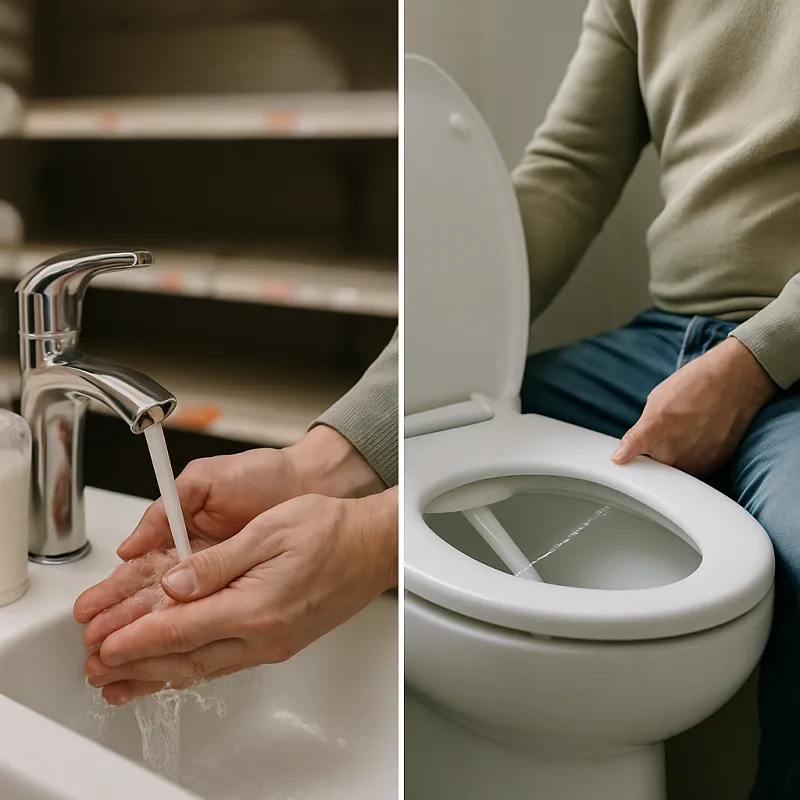
Introduction to Bidet Adoption
The COVID-19 pandemic has significantly altered numerous aspects of daily life, from how we work and socialize to the hygiene practices we adopt at home. One notable shift in the realm of personal hygiene is the increased adoption of bidets in American households. Traditionally more popular in Europe and Asia, bidets have seen a surge in interest and use in the United States post-pandemic. This blog post explores the factors driving this change, the benefits of using bidets, and the implications for American households.
Bidet Use Debate from a Religious Perspective 👆The Pandemic’s Role in Hygiene Practices
The onset of the COVID-19 pandemic brought the importance of hygiene and cleanliness to the forefront of public consciousness. As panic buying led to shortages of toilet paper in 2020, many Americans began seeking alternatives. This situation created a perfect storm for bidets to gain traction. Bidets offer a more sustainable and hygienic solution compared to traditional toilet paper, which became an attractive option amid shortages and increased awareness of hygiene.
Toilet Paper Shortages
Toilet paper shortages during the pandemic highlighted the vulnerability of relying solely on this product for bathroom hygiene. The empty shelves prompted many to reconsider their bathroom habits and explore more reliable and sustainable options. Bidets, which use a stream of water to clean, provided a practical and effective solution, reducing dependency on toilet paper.
Increased Hygiene Awareness
The pandemic heightened awareness of personal hygiene, with individuals more conscious than ever about the need for cleanliness to prevent the spread of viruses. Bidets, by nature, offer a more thorough cleaning than toilet paper alone, appealing to those looking to enhance their hygiene routines. This increased awareness has contributed significantly to the growing acceptance and adoption of bidets in American homes.
Comparison of Bidet Usage Habits in Europe and Asia 👆Environmental and Economic Benefits
Beyond hygiene, bidets offer several environmental and economic benefits that have attracted American consumers. These benefits align well with the growing trend toward sustainability and cost efficiency, further fueling bidet adoption.
Reducing Paper Waste
Bidets significantly reduce the need for toilet paper, which in turn decreases paper waste. This reduction is a critical consideration for environmentally conscious consumers. By using less toilet paper, households can contribute to saving trees and reducing the carbon footprint associated with paper production and transportation.
Cost Savings
While the initial investment in a bidet can vary, the long-term savings are considerable. Households using bidets typically see a reduction in toilet paper purchases, which can add up to significant cost savings over time. For instance, a family that previously spent $100 annually on toilet paper might cut that expense by half or more, making bidets a financially savvy choice in the long run.
Analysis of Factors Driving Growth in the US Bidet Market 👆Health Benefits of Bidets
In addition to environmental and economic advantages, bidets offer substantial health benefits that enhance their appeal. These benefits address common bathroom-related issues and promote overall well-being.
Improved Personal Hygiene
Bidets provide a more effective and gentle cleaning method, reducing the risk of irritation, infections, and other hygiene-related health problems. For individuals with sensitive skin or conditions such as hemorrhoids, bidets can offer relief and promote better skin health by reducing friction and improving cleanliness.
Enhanced Comfort for Seniors
For seniors and individuals with mobility issues, bidets offer a convenient and comfortable solution. The ease of use and reduced need for physical exertion can enhance bathroom independence and reduce the risk of falls or injuries, promoting a higher quality of life for older adults.
History and Present of Japanese Bidet Culture 👆Challenges to Bidet Adoption
Despite the numerous advantages, there are challenges to bidet adoption in American households. Understanding these barriers is essential for addressing them and encouraging wider acceptance.
Installation and Plumbing Concerns
One of the primary challenges is the perceived complexity of installation and potential plumbing issues. Many Americans are unfamiliar with bidet installation, which can deter them from making the switch. However, modern bidet attachments and seats are designed for easy installation, often requiring no professional plumbing services.
Cultural Norms and Preferences
Cultural norms and long-standing preferences for toilet paper also pose a challenge. The perception that bidets are foreign or unnecessary can hinder adoption. Addressing this requires education and exposure to the benefits and practicality of bidets, helping to shift cultural attitudes toward more sustainable and effective hygiene options.
Checklist for Purchasing Eco-Friendly Bidets 👆The Future of Bidets in America
As the pandemic’s impact continues to reshape consumer behaviors, the future of bidets in American households looks promising. With increasing awareness of hygiene, environmental concerns, and the benefits of bidets, more households are likely to embrace this change.
Innovation and Accessibility
Ongoing innovation in bidet technology is making them more accessible and appealing to a broader audience. Features such as heated seats, adjustable water pressure, and air dryers add to the convenience and comfort, making bidets a desirable addition to modern bathrooms.
Education and Awareness
Increasing education and awareness campaigns can further drive adoption. By highlighting the benefits and dispelling myths, more consumers can make informed decisions about incorporating bidets into their homes. As more people experience the advantages firsthand, the cultural shift towards bidet use is likely to accelerate.
Impact of Bidet Use on Preventing Deforestation 👆Conclusion
The post-pandemic era has ushered in a new wave of hygiene consciousness, prompting many American households to reconsider their bathroom habits. Bidets, with their myriad of benefits, have emerged as a viable and attractive alternative to traditional toilet paper. While challenges remain, the growing trend toward sustainability, cost-efficiency, and enhanced personal hygiene suggests that bidets will continue to gain traction in the United States. By embracing this change, households can not only improve their hygiene and comfort but also contribute to a more sustainable future.
Related Post: Analysis of Factors Driving Growth in the US Bidet Market
The Relationship Between Reducing Plastic Packaging and Bidet Adoption 👆